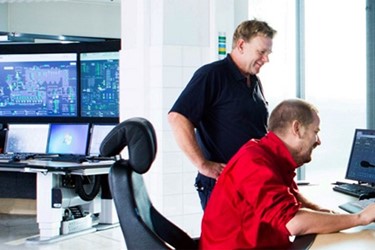Managing Subcontracted Workers: Protecting Your Company And Customers
By Rayanne Buchianico, ABC Solutions, LLC

In the world of Managed Service Providers, so much of our work can be handled remotely. Because of remote management tools, we can look across the globe to find workers, if they never need to visit the customer on-site. This gives the modern MSP the opportunity to find the best engineer as opposed to the nearest one. In theory, this all sounds fantastic. Challenges arise when putting this into practice and you begin to think of all the sensitive data you are sharing with a remote worker. Here are some tips to protect yourself and protect your customers’ information.
Do Not Hire Someone You Cannot Trust
This basic rule may seem obvious, but when hiring a remote technician through Reddit posts or Facebook groups, how well do you really know the person? If you are truly interested in working with someone in a remote location, spend a few dollars and meet him/her in person. Have facetime meetings online. Do a background check. Perform all the same pre-hire checks as you would a local employee but be more thorough for a remote worker. When building a relationship from nothing, remove all the trust barriers up-front.
Non-Disclosure And Non-Compete Agreements
In addition to a standard Independent Contractor Agreement, you also will want a signed document agreeing not to disclose your confidential information and not to use that information to solicit your customers. Samples and templates of these agreements can be found easily all over the internet. These documents should explicitly describe what is and what is not acceptable behavior throughout the business relationship and beyond. As a general rule, our firm requires all employees as well as subcontractors to sign this form before beginning work. A diligent MSP might even have a lawyer look at it. Remember, however, lawyers are only licensed in their state and may not be licensed for the state where your remote worker is located.
Insurance
Even though you have the background checks and documents in place, insurance is also a good piece of your backup plan. In addition to general liability and Errors and Omissions Insurance, consider also an Employee Theft policy. In the unlikely event that a worker steals sensitive data and sells it on the dark web injuring your customers, employee theft insurance will cover the stealing of the data. Your E&O policy covers primarily errors, not theft.
MSP Toolset Control
At all times, you should maintain control of the customer information within your own toolset. If you use Autotask and the worker uses ConnectWise, you will want the worker to use your Autotask while working on your customer accounts. If the worker is not comfortable with that, it may not be the best fit to work together. Do not begin a relationship at odds with tools, it will not improve with time. Your company. Your customers. Your tools. This is not negotiable. Having your customer data scattered across the globe in multiple tools for which you have no access is dangerous and irresponsible. In the next segment of this series, we will discuss managing the service desk in detail to streamline the workflow in a seamless customer experience environment.
Documentation
Documentation is a critical piece for remote workers. They do not have the luxury of walking into your office to ask a question. With more tasks and procedures fully documented, your remote workers have a better chance of success. Many documentation tools have active directory connections for automation and password management for convenience. Setting up groups and locking down permissions allows you to maintain control over who sees what data. Many password managers allow you to share passwords with other users without giving them the ability to see the password. They can use it but never see it.
If you use a password manager, be sure to maintain control of the account. Add the worker to your team and pay for the license. If the relationship ends, you can disable it quickly. It’s just like all the other employee offboarding you do for customers. If you’re not using a password manager that automatically generates secure passwords, start now.
Communication
If there is anything I learned after years of running my business, it is that communication in all aspects of business is key. Be sure to have regular meetings with your remote workers. If you have companywide meetings regularly, and you should, be sure to invite them to attend remotely through Zoom or Skype. They may not be in the room, but they are still part of the team and should be treated accordingly. Use a communication tool such as Teams or Slack to stay connected for quick questions and assistance. Assign work through normal channels.
Finally, the fewer changes you make to your internal processes, the happier everyone will be. If your processes need changing and updating, implement them slowly and methodically to avoid inevitable chaos. You may feel like you found the perfect person to outsource, but if synergies are not aligned, walk away. Your company. Your customers. Your rules.
About The Author
Rayanne Buchianico owns and operates ABC Solutions, LLC, an accounting, tax, and business systems consulting firm serving all industries and specializing in IT firms throughout the United States. She is also a partner in Sell My MSP, a listing service connecting interested buyers with motivated sellers of IT firms. Rayanne is passionate about nurturing the transformation in owners of small businesses who become more comfortable and savvier with the financial aspects of their business.
